Ganghwa Haesoo Land (강화해수랜드)
10.3 Km 51416 2024-02-20
13-12 Haeannam-ro, Gilsang-myeon, Ganghwa-gun, Incheon
Ganghwa Haesoo Land, established in 1992, is a comprehensive leisure facility that integrates a sauna with seawater baths. The sauna encompasses various facilities, including red clay sauna, salt sauna, charcoal sauna, and steam sauna. The seawater baths utilize mineral-rich seawater sourced from 560 meters underground. Complementing these features, the facility offers additional amenities such as a swimming pool, outdoor concert hall, and a café.
Donggeomdo (Trail, Campground, Art Cinematheque) (동검도(나들길,캠핑,예술극장))
10.4 Km 0 2024-02-20
60 Donggeom-gil 63beon-gil, Gilsang-myeon, Ganghwa-gun, Incheon
Donggeomdo Island is a petite island connected to the main island of Ganghwado Island, celebrated for its stunning tidal flats and coastal vistas. A stroll along the trail on the eastern coast of the island offers visitors a chance to savor diverse natural landscapes, while the scattered campgrounds provide a romantic setting for leisure activities. Notably, the DRFA365 Art Cinematheque, featuring art films, adds to the island's charm and attractions.
Deokpojin Museum of Education (덕포진교육박물관)
10.7 Km 29662 2021-02-26
90, Deokpojin-ro 103beon-gil, Gimpo-si, Gyeonggi-do
+82-31-989-8580
Deokpojin Museum of Education was established by Kim Dong-seon, an elementary school teacher, for his wife, Lee In-suk who lost her eye sight due to an accident while she was also an elementary school teacher. He decided to build the museum to cheer up his wife who was deeply depressed with the fact that she could no longer teach students. Through the husband's will to give his wife opportunities to teach children again, his dream to create hands-on educational programs not available in the ordinary school education system became a reality as well. The museum was finally opened in 1996 with materials collected by the couple, comprised of a music class taught with her pump organ and Mr. Kim's collection of various school materials such as a book wrapper, a nature textbook from 1960, nickel silver lunch boxes and more. These collections attracts many visitors, from kindergarteners to university students and even family visitors.
Gimpo Hamsang Park (김포함상공원)
10.7 Km 4809 2023-08-08
110-36, Daemyeonghang 1-ro, Gimpo-si, Gyeonggi-do
+82-31-987-4097
Gimpo Hamsang Park is the first battleship themed park in the Seoul metropolitan area. With LST battleship on display, there are many things to see and experience at the park. Visitors can learn various information about the lives and duties of naval officers as well as enjoy a panoramic view of the West Sea.
Jeokseoksa Temple (적석사)
10.7 Km 14300 2021-08-02
181, Yeonchon-gil, Ganghwa-gun, Incheon
+82-32-932-6191
Jeokseoksa Temple is a traditional Buddhist temple that was founded around 1,600 years ago. It is known for "Gamnojeong," which is the water trickling out from the rock crevices on the east side of Daeungjeon Hall (main temple building). While the water is cool and sweet, legend has it that it dries up or turns murky in times of national crisis. According to the records, Palman Daejanggyeong (Tripitaka Koreana printing woodblocks) used to be kept in Jeokseoksa before they were moved to Baengnyeongsa Temple, then to Jeondeungsa Temple, and finally to Haeinsa Temple.
Jeokseoksa Temple is connected to Nakjodae Observatory, which offers a magnificent view of the sun setting over the West Sea. In fact, the view is so magnificent that it is admired as one of the 10 best sceneries of Ganghwado Island.
Seongmodo Island Mineral Hot Springs (석모도 미네랄 온천)
10.7 Km 67006 2023-02-09
865-17, Samsannam-ro, Ganghwa-gun, Incheon
+82-32-930-7051
Located near Bomunsa Temple, Minmeoru Beach, Seongmodo Island Arboretum, and a recreational forest, Seongmodo Island Mineral Hot Springs is a place where visitors can enjoy hot springs while looking at the West Sea and the view of sunset over the horizon. The sea breeze and sunlight also help to relax one's body and mind.
The spring waters are pure mineral water that gush out from volcanic granite, reaching a temperature of 51℃ with no artificial or chemical additives. It is rich in calcium, potassium, magnesium, and sodium chloride. Various minerals in the hot spring water not only help improve skin conditions such as atopic dermatitis and dryness but are also easily absorbed into the skin to help with beauty, moisturizing, and blood circulation. They are also known to have excellent effects on arthritis and muscle pain.
Sugi Beach (수기해변)
10.7 Km 14236 2022-07-28
291-48, Sido-ro 86beon-gil, Ongjin-gun, Incheon
+82-32-899-2253
Located on Sido Island in Incheon, Sugi Beach is easily accessible from Seoul. Sido Island is situated between Yeongjongdo Island and Ganghwado Island. The beach is not as crowded as other famous beaches, and is ideal for families or campers.
Sugi Beach was the filming location for the famous drama series "Full House (2004)." Sido Island connects Sindo Island and Modo Island, making it easy to tour the three islands by foot or car.
Ganghwa Seonwonsa Temple Site (강화 선원사지)
10.8 Km 12516 2022-09-19
222, Seonwonsaji-ro, Ganghwa-gun, Incheon
+82-32-933-8234
Ganghwa Seonwonsa Temple Site was first discovered in 1976 during a surface examination around Ganghwado Island undertaken by the Ganghwado Island Academic Research Team of Dongguk University. The site was designated as Historic Site No. 259 in 1977. Seonwonsa Temple was built by General Choi Wu in 1245 (the 32nd year of King Gojong’s reign during the Goryeo dynasty), which was right after the transfer of the capital to Ganghwado during resistance against the Mongolian invasion.
The temple was meant to be a spiritual mainstay in fighting against Mongolia. It used to be one of the two largest temples in Korea along with Songgwangsa Temple. However, the temple was completely destroyed during the early Joseon era, leaving only the site itself. The famous wood blocks of Palman Daejanggyeong (the Tripitaka Koreana), currently housed in Haeinsa Temple at Hapcheon, are said to have been originally stored in Seonwonsa Temple. It is believed that the carved wood blocks were taken from Seonwonsa to Heungcheonsa Temple during the Joseon era and again moved to Haeinsa Temple during the reign of Sejo.
Located on a mountain slope, the presumed location of the building site extends 250 meters from south to north and 170 meters from east to west.
Daemyeonghang Fishery Market (대명항수산물직판장)
10.9 Km 4771 2024-02-26
109 Daemyeonghang 1-ro, Daegot-myeon, Gimpo-si, Gyeonggi-do
Daemyeonghang Fishery Market specializes in selling only natural, freshly caught seafood, brought directly by local fishermen. In spring, the market offers shaggy sea raven filled with roe and webfoot octopus. Summer brings a selection of sea bass and flatfish, while autumn features an abundance of blue crabs. Continuously attracting visitors seeking the freshest seafood, the market also includes a dedicated section for salted and dried seafood products.
Gimpo Daemyeong Port (김포 대명항)
10.9 Km 64867 2023-02-02
109, Daemyeonghang 1-ro, Daegot-myeon, Gimpo-si, Gyeonggi-do
The piercing smell of salt, the energy of freshly caught fish, fishing boats returning from far out at sea, and people walking in and out of the fish market and raw fish restaurants - these are the scenes of Daemyeong Port in Daegot-myeon, Gimpo where the fresh vigor of life is vividly alive. It is located just 30 minutes from Gimpo Airport by car so it is close to Seoul. Fishermen and owners of fishing boats personally run raw fish restaurants so the prices of raw fish are about 20% cheaper here than at other ports, according to the people of Daemyeong Port. Raw fish restaurants that you first encounter at the entrance of the port have tanks filled with freshly caught fish, and fishing nets spread out here and there vividly show the unique characteristics of a port. As it is the only port on the coast of Ganghwado Island, you are able to fully enjoy the beautiful seascape. The port is also receiving a great deal of attention both locally and nationwide thanks to the Daemyeong Type 2 Fishery Harbor project and the Pungeoje Festival. In 2001, Daemyeong Port was selected as one of the "7 Winter Seas recommended by the Korea Tourism Organization" for its beautiful seascape and flavors of a traditional port. Facing Ganghwado across Ganghwa Strait, Daemyeong Port is not as busy with tourists as Sorae Port or Yeonan Pier and boasts quiet and affectionate scenes of a fishing village. Nearby lies Deokpojin Fort, which is a historical site where our ancestors in the late Joseon Dynasty fought against foreign forces.
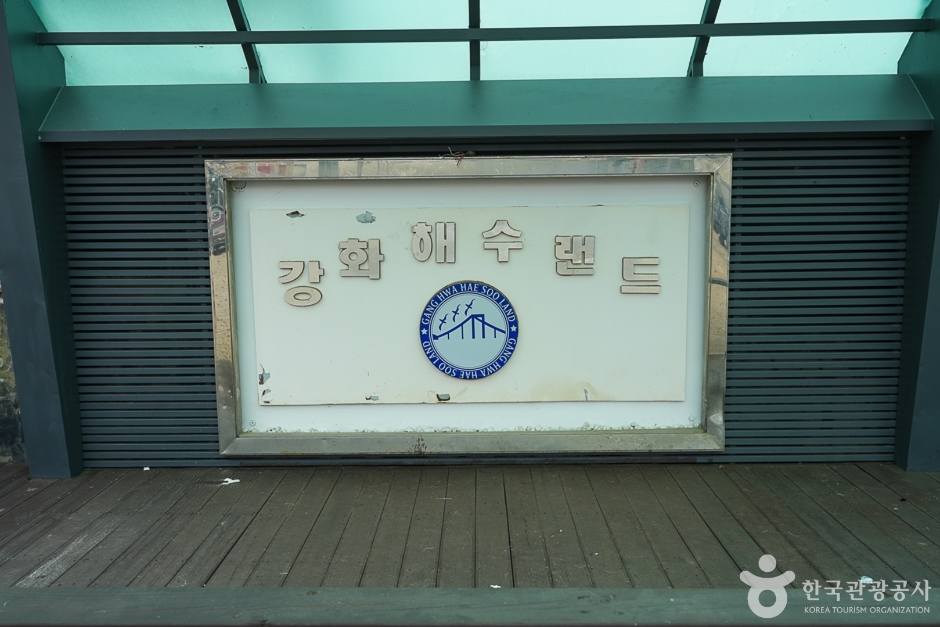
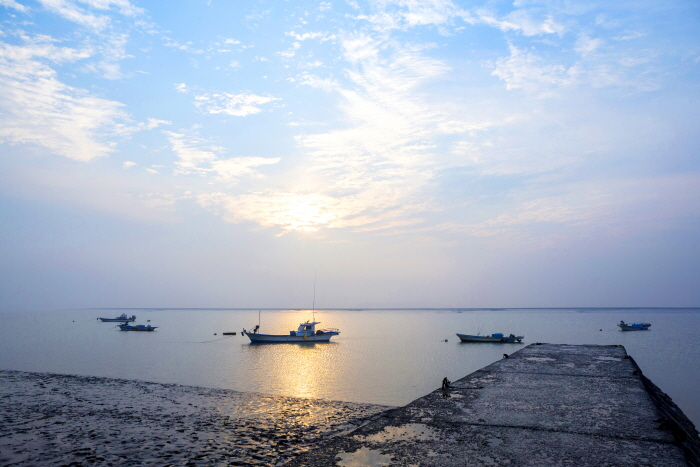
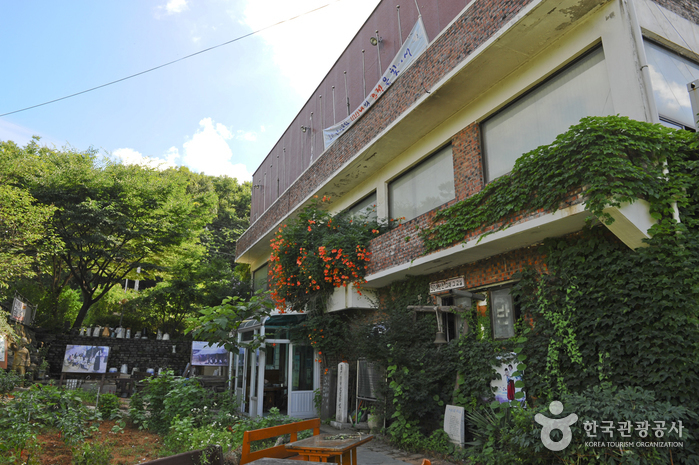
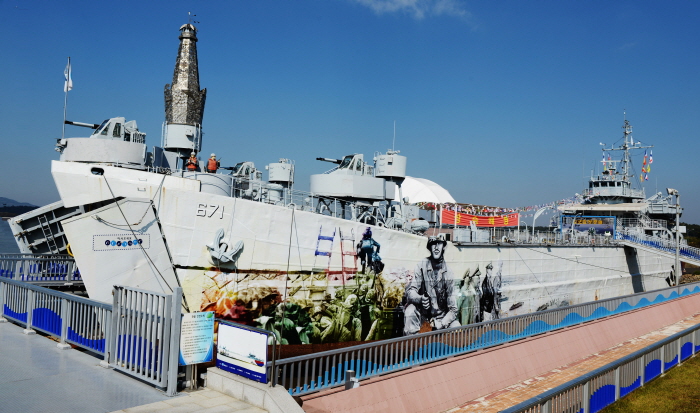

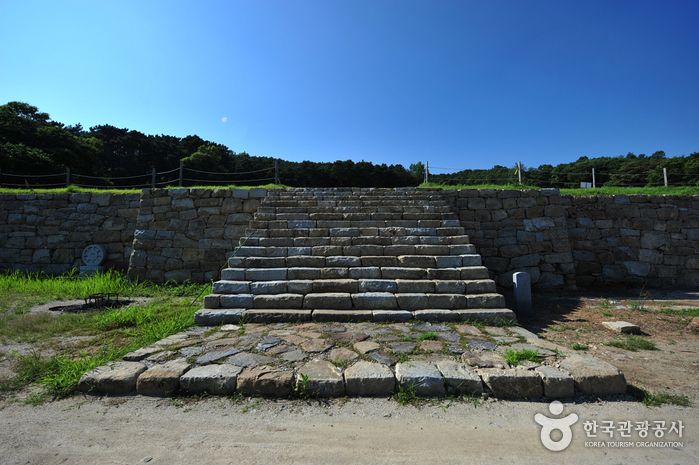
 English
English
 한국어
한국어 日本語
日本語 中文(简体)
中文(简体) Deutsch
Deutsch Français
Français Español
Español Русский
Русский